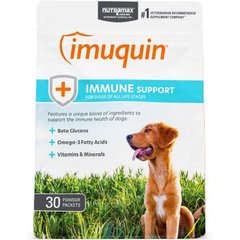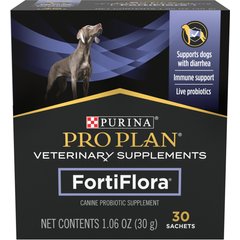5 Ways to Strengthen Your Dog’s Bones
PetMD Editorial
5 Ways to Strengthen Your Dog’s Bones
By John Gilpatrick
While pets require the same things humans need for bone health—calcium, vitamin D, phosphorus, and exercise among them—they require very different strategies to meet those needs.
Bone health has generally gotten a lot better for dogs across the board, according to Dr. Felix Duerr, an assistant professor of small animal orthopedics and sports medicine at the Colorado State University College of Veterinary Medicine & Biomedical Sciences. “This used to be a very common problem when there wasn't good nutrition information out there for pet owners,” Duerr says. “Now, most people feed high-quality diets. Nutrition, and bone health as a result, has improved quite dramatically.”
Duerr acknowledges there are many types of dogs for which bone health should still be a concern and focus for owners. This includes growing dogs and large breeds that are more prone to developmental bone disorders and osteoarthritis, both of which can be debilitating for any dog.
Here are five ways you can strengthen your dog’s bones.
Buy a High-Quality Commercial Food
Meeting your dog’s nutritional needs—especially as it pertains to calcium, vitamin D, and phosphorus—is the very best thing you can do for her bone health. The easiest way to do that is to find a nutritionally balanced dog food that’s designed to meet your pet’s specific needs.
“Commercial products are formulated to provide sufficient amounts and adequate ratios of calcium and phosphorous for adult dogs and cats, as well as animals during growth,” says Dr. Jonathan Stockman, diplomate of the American College of Veterinary Nutrition and clinical instructor and head of the Clinical Nutrition Service at Colorado State.
These standards come from the American Association of Feed Control Officials, and foods that meet them will carry an “AAFCO” statement on their label that reads something along the lines of, “Animal feeding tests using AAFCO procedures substantiate that Brand A adult dog food provides complete and balanced nutrition for maintenance of adult dogs).
5 Ways to Strengthen Your Dog’s Bones
 Nutramax Imuquin Immune Support Powder Immune Supplement for Dogs, 30 countRated 4.6 out of 5 stars80Reviews$24.99Chewy Price
Nutramax Imuquin Immune Support Powder Immune Supplement for Dogs, 30 countRated 4.6 out of 5 stars80Reviews$24.99Chewy Price Purina Pro Plan Veterinary Diets FortiFlora Powder Probiotic Digestive Supplement for Dogs, 30 countRated 4.8 out of 5 stars9679Reviews$30.99Chewy Price
Purina Pro Plan Veterinary Diets FortiFlora Powder Probiotic Digestive Supplement for Dogs, 30 countRated 4.8 out of 5 stars9679Reviews$30.99Chewy Price Purina Pro Plan Adult Sensitive Skin & Stomach Salmon & Rice Formula Dry Dog Food, 16-lb bagRated 4.4 out of 5 stars13KReviews$54.48Chewy Price
Purina Pro Plan Adult Sensitive Skin & Stomach Salmon & Rice Formula Dry Dog Food, 16-lb bagRated 4.4 out of 5 stars13KReviews$54.48Chewy Price Virbac Epi-Otic Advanced Ear Cleaner for Dogs & Cats, 4-fl oz bottleRated 4.7 out of 5 stars2588Reviews$12.34Chewy Price
Virbac Epi-Otic Advanced Ear Cleaner for Dogs & Cats, 4-fl oz bottleRated 4.7 out of 5 stars2588Reviews$12.34Chewy Price
Don’t Feed Too Much or Too Little
Dogs who overeat are more likely to have joint problems, Duerr says. “This is especially true during development when overeating causes lasting joint problems because the dogs grow too fast,” he adds.
However, erring too much on the side of caution can create other problems. If dogs don’t eat enough, they’ll fall short of their needed daily amounts of bone-building vitamins and minerals.
Duerr says supplementation might be necessary in these dogs, but then you also run the risk of over-supplementation, which can be dangerous (more on this later). Therefore, it’s always best to follow portion size recommendations as closely as possible and to monitor your dog’s body condition to fine tune the amount you are offering.
Find Consistency in Exercise
There’s no clear science behind the specific type, amount, and intensity of exercise that will strengthen a dog’s bones, Duerr says, but that doesn’t mean there aren’t rules worth following. “We don’t send 8-year-old kids on a marathon,” he explains, “so why would we ask puppies to do the equivalent?”
Pushing dogs too much is the easiest way to create bone or joint problems that last a lifetime, but it’s just as bad to do nothing or be extremely inconsistent when it comes to your dog’s exercise.
“Regular walks and an occasional run around the yard are usually enough to contribute positively to bone health,” Duerr says. “Multiple times a day for shorter periods is better than one long walk a day, but even that is better than nothing.”
Avoid Supplements, with One Exception
A lot of dog owners think adding some bone-building supplements to a dog’s diet helps, but the opposite might be true.
“When a dog or a cat is provided with a complete and balanced diet with sufficient amounts of vitamin D, calcium, and phosphorous, there is no need for additional supplementation,” Stockman says. And as outlined earlier, too many nutrients can cause various medical problems, some very serious. Too much can be just as dangerous as too little.
For animals who are already suffering from bone and joint problems, Stockman says, omega-3 fatty acid supplements may be helpful.
“When choosing an omega-3 product, it is important to ensure it provides EPA (eicosapentaenoic acid) and DHA (docosahexaenoic acid) in sufficient concentrations and not alpha-Linolenic acid, which is inefficiently metabolized to EPA and DHA in dogs and cats,” he says. This means marine sources like algae should be used instead of land-based plant sources like flaxseed oil.